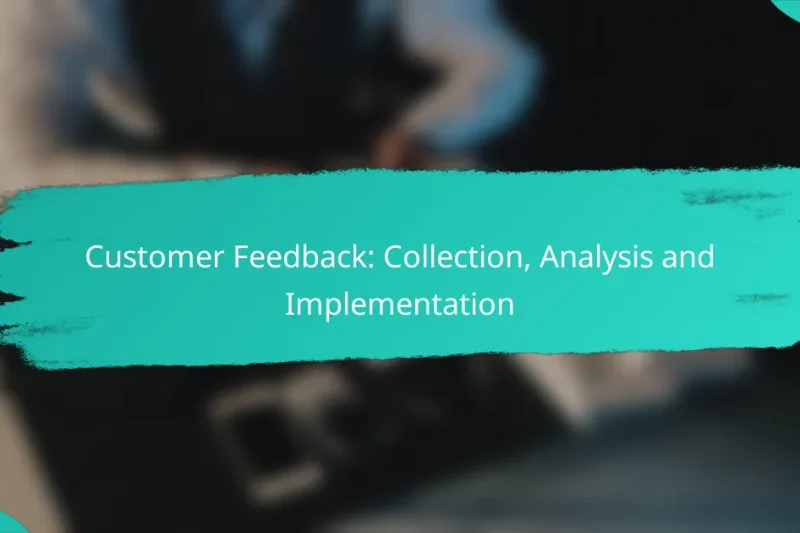Customer feedback is a vital component for businesses looking to enhance their offerings and connect with … Customer Feedback: Collection, Analysis and ImplementationRead more
Digital Products: Customer Support Solutions
In today’s digital landscape, effective customer support solutions are essential for enhancing user experience and ensuring satisfaction. Options such as live chat software, helpdesk platforms, and AI-driven chatbots provide immediate assistance and streamline problem resolution. By prioritizing features like ticket management and multi-channel support, businesses can significantly improve their service quality and responsiveness.
Customer Support: Service Quality, Responsiveness and Satisfaction
In today’s competitive landscape, enhancing customer support service quality is essential for fostering loyalty and satisfaction. … Customer Support: Service Quality, Responsiveness and SatisfactionRead more
Community Building: Engagement, Loyalty and Support
Community building is essential for fostering engagement, loyalty, and support among members. By leveraging digital products … Community Building: Engagement, Loyalty and SupportRead more
FAQs: Clarity, Relevance and Accessibility
In today’s digital landscape, clarity, relevance, and accessibility are essential for creating effective FAQs that cater … FAQs: Clarity, Relevance and AccessibilityRead more
Customer Expectations: Communication, Transparency and Delivery Timelines
In today’s competitive market, meeting customer expectations hinges on effective communication, transparency, and reliable delivery timelines. … Customer Expectations: Communication, Transparency and Delivery TimelinesRead more
Refund Requests: Process, Policies and Customer Communication
Understanding the refund request process is crucial for both businesses and customers, as it ensures compliance … Refund Requests: Process, Policies and Customer CommunicationRead more
Chatbots: Efficiency, Engagement and Support
Chatbots are transforming the landscape of customer interaction by enhancing efficiency, engagement, and support for businesses. … Chatbots: Efficiency, Engagement and SupportRead more
What are the best customer support solutions for digital products in Canada?
The best customer support solutions for digital products in Canada include live chat software, helpdesk platforms, AI-driven chatbots, knowledge base systems, and remote support tools. These solutions enhance customer experience by providing timely assistance and efficient problem resolution.
Live chat software
Live chat software enables real-time communication between customers and support agents. This tool is essential for addressing inquiries quickly, often leading to higher customer satisfaction rates. Popular options in Canada include Zendesk Chat and Intercom, which offer features like chat routing and analytics.
When selecting live chat software, consider factors such as integration capabilities with existing systems, ease of use, and mobile accessibility. Aim for a solution that allows for seamless transitions between chat and other support channels.
Helpdesk platforms
Helpdesk platforms centralize customer support requests and streamline ticket management. They allow teams to track issues, prioritize tasks, and maintain communication with customers. Notable platforms in Canada include Freshdesk and Zoho Desk.
Choose a helpdesk platform that offers automation features, reporting tools, and integration with other software. This can significantly reduce response times and improve overall efficiency in handling customer queries.
AI-driven chatbots
AI-driven chatbots provide automated responses to common customer inquiries, freeing up human agents for more complex issues. These tools can operate 24/7, ensuring that customers receive assistance outside of regular business hours. Popular solutions include Drift and Tidio.
When implementing chatbots, ensure they are programmed with a comprehensive FAQ and can seamlessly transfer to a human agent when necessary. Regularly update the chatbot’s knowledge base to keep responses relevant and accurate.
Knowledge base systems
Knowledge base systems serve as self-service resources where customers can find answers to their questions independently. These platforms can reduce the volume of support requests by empowering users to resolve issues on their own. Examples include Helpjuice and Confluence.
To create an effective knowledge base, organize content logically and ensure it is easily searchable. Regularly review and update articles to reflect new information and customer feedback, enhancing usability and relevance.
Remote support tools
Remote support tools allow support agents to access customers’ devices to troubleshoot issues directly. This approach can be particularly effective for resolving technical problems that are difficult to explain. Popular tools in Canada include TeamViewer and AnyDesk.
When using remote support tools, prioritize security by ensuring connections are encrypted and sessions are logged. Always obtain customer consent before accessing their devices, and provide clear instructions on what to expect during the session.
How do live chat solutions enhance customer support?
Live chat solutions significantly enhance customer support by providing immediate access to assistance. They enable real-time communication between customers and support agents, leading to quicker resolutions and improved overall service quality.
Real-time assistance
Live chat allows customers to receive support instantly, often within seconds. This immediacy is crucial in today’s fast-paced environment, where customers expect quick answers to their inquiries. For example, a customer can ask about product availability or troubleshoot an issue without waiting on hold for a phone call.
To maximize the effectiveness of real-time assistance, businesses should ensure that their chat systems are staffed adequately during peak hours. Implementing chatbots for initial queries can also help manage volume while freeing up human agents for more complex issues.
Increased customer satisfaction
Customer satisfaction tends to rise with the use of live chat solutions due to the convenience and speed they offer. Studies suggest that customers appreciate being able to multitask while chatting, as it allows them to continue their activities without significant interruptions.
To further enhance satisfaction, businesses should focus on providing well-trained agents who can engage effectively with customers. Regularly gathering feedback on chat interactions can help identify areas for improvement and ensure that customer needs are being met consistently.
What features should I look for in helpdesk software?
When selecting helpdesk software, prioritize features that enhance ticket management, support multiple communication channels, and provide robust analytics. These capabilities ensure efficient customer service and informed decision-making.
Ticket management
Effective ticket management is crucial for tracking customer inquiries and issues. Look for software that allows for easy ticket creation, categorization, and prioritization, enabling your team to respond promptly. Features like automated ticket routing can significantly reduce response times.
Consider tools that offer a centralized dashboard for monitoring ticket status and history. This transparency helps in managing workloads and ensures that no customer query goes unanswered. A good system should also allow for easy collaboration among team members on complex issues.
Multi-channel support
Multi-channel support enables customers to reach you through various platforms, such as email, chat, social media, and phone. Choose software that integrates these channels into a single interface, allowing for seamless communication and consistent service delivery.
Ensure that the helpdesk software can handle inquiries from popular messaging apps and social media platforms, as customers increasingly prefer these channels. This flexibility can enhance customer satisfaction and engagement, leading to improved loyalty.
Analytics and reporting
Analytics and reporting features provide insights into your helpdesk performance and customer satisfaction. Look for software that offers customizable reports on ticket resolution times, customer feedback, and agent performance metrics. These insights can guide improvements in your support processes.
Consider tools that allow you to track key performance indicators (KPIs) such as average response time and ticket volume trends. Regularly reviewing these metrics can help identify areas for improvement and ensure your team meets service level agreements (SLAs).
How can AI-driven chatbots improve efficiency?
AI-driven chatbots enhance efficiency by automating customer interactions, allowing businesses to handle inquiries swiftly and accurately. They reduce the workload on human agents, enabling them to focus on more complex issues while providing consistent support to customers.
24/7 availability
AI chatbots operate around the clock, ensuring that customers receive assistance at any time, day or night. This constant availability is crucial for businesses that serve global markets or have customers in different time zones.
By being accessible 24/7, chatbots can address urgent inquiries immediately, improving customer satisfaction and loyalty. This feature is particularly beneficial for e-commerce platforms where customers may shop outside of traditional business hours.
Instant responses
One of the key advantages of AI chatbots is their ability to provide instant responses to customer queries. This immediacy helps to reduce wait times, which can be a significant factor in customer satisfaction.
For example, a chatbot can answer frequently asked questions about product availability or shipping details in seconds, whereas a human agent might take several minutes to respond. This efficiency not only enhances the customer experience but also allows businesses to manage higher volumes of inquiries simultaneously.
Cost reduction
Implementing AI-driven chatbots can lead to significant cost reductions for businesses. By automating routine tasks, companies can minimize the need for a large customer support team, which can save on salaries and training expenses.
Additionally, chatbots can handle multiple inquiries at once, further decreasing the cost per interaction. Businesses may find that their operational costs drop by a notable percentage, freeing up resources for other strategic initiatives.
What are the benefits of a knowledge base system?
A knowledge base system offers numerous advantages, including improved efficiency in customer support and enhanced user satisfaction. By providing readily accessible information, it empowers users to find solutions independently, reducing the need for direct assistance.
Self-service support
Self-service support allows customers to resolve their issues without needing to contact support agents. This can be achieved through a well-structured knowledge base that includes FAQs, tutorials, and troubleshooting guides. Users appreciate the convenience of finding answers at their own pace, which can lead to quicker resolutions.
To implement effective self-service support, ensure that your knowledge base is user-friendly and searchable. Regularly update content based on customer inquiries to keep information relevant and useful.
Reduced support tickets
Implementing a knowledge base can significantly reduce the number of support tickets generated by customers. When users can find answers independently, the volume of inquiries directed to support teams decreases. This not only saves time for both customers and support staff but also allows resources to be allocated to more complex issues.
To maximize this benefit, track common questions and topics that lead to support tickets. Use this data to enhance your knowledge base, addressing gaps in information that may lead to customer confusion.
Enhanced user experience
An effective knowledge base enhances the overall user experience by providing quick access to information. Customers who can easily find solutions are more likely to feel satisfied with your service. A positive experience can lead to increased loyalty and repeat business.
To further enhance user experience, consider incorporating multimedia elements such as videos and infographics. These can make complex information easier to understand and more engaging for users.
What are the prerequisites for implementing customer support solutions?
To implement effective customer support solutions, businesses need a clear understanding of their customer needs, the right technology, and a well-trained support team. These prerequisites ensure that the solutions are tailored to enhance customer satisfaction and operational efficiency.
Understanding customer needs
Identifying customer needs involves gathering feedback through surveys, interviews, and analyzing support tickets. This information helps in tailoring support solutions that address common issues and improve overall service quality. Regularly revisiting this data is crucial as customer expectations can evolve over time.
Choosing the right technology
Selecting appropriate technology is essential for efficient customer support. Options include helpdesk software, live chat tools, and customer relationship management (CRM) systems. Consider factors like scalability, integration capabilities, and user-friendliness when evaluating different solutions.
Training the support team
A well-trained support team is vital for the success of customer support solutions. Training should cover product knowledge, communication skills, and the use of support tools. Ongoing training sessions can help staff stay updated on new features and best practices, ultimately leading to better customer interactions.






